The history of North Macedonia encompasses the history of the territory of the modern state of North Macedonia.

North Macedonia is a country situated in southeastern Europe with geographic coordinates 41°50′N22°00′E, bordering Kosovo and Serbia to the north, Bulgaria to the east, Greece to the south and Albania to the west. The country is part of the wider region of Macedonia and makes up most of Vardar Macedonia. The country is a major transportation corridor from Western and Central Europe to Southern Europe and the Aegean Sea. North Macedonia is a landlocked country but has three major natural lakes: Lake Ohrid, Lake Prespa and Lake Dojran. It has a water area of 857 km2, while its land area is 24,856 km2.

Macedonians are a nation and a South Slavic ethnic group native to the region of Macedonia in Southeast Europe. They speak Macedonian, a South Slavic language. The large majority of Macedonians identify as Eastern Orthodox Christians, who share a cultural and historical "Orthodox Byzantine–Slavic heritage" with their neighbours. About two-thirds of all ethnic Macedonians live in North Macedonia and there are also communities in a number of other countries.

The Orthodox Ohrid Archbishopric was an autonomous Eastern Orthodox archbishopric of the Serbian Orthodox Church (SOC) with jurisdiction over the territory of North Macedonia. Its creation was initiated in 2002, and formalized in 2005. In 2023, after the reconciliation of the SOC and the Macedonian Orthodox Church (MOC), the OOA was integrated into MOC. On 28 June 2023, the Holy Synod of OOA made an official announcement, stating that it has fulfilled its mission, and noting that OOA hierarchs have collectively joined MOC.

The Socialist Republic of Macedonia, or SR Macedonia, commonly referred to as Socialist Macedonia, Yugoslav Macedonia or simply Macedonia, was one of the six constituent republics of the post-World War II Socialist Federal Republic of Yugoslavia, and a nation state of the Macedonians. After the transition of the political system to parliamentary democracy in 1990, the Republic changed its official name to Republic of Macedonia in 1991, and with the beginning of the breakup of Yugoslavia, it declared itself an independent country and held a referendum on 8 September 1991 on which a sovereign and independent state of Macedonia, with a right to enter into any alliance with sovereign states of Yugoslavia was approved.
Albanians in North Macedonia are ethnic Albanians who constitute the second largest ethnic group in North Macedonia, forming 446,245 individuals or 24.3% of the resident population. Of the 2,097,319 total population in the 2021 census, 619,187 or 29.52% are Albanians.
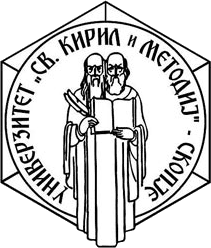
The Saints Cyril and Methodius University is a public research university in Skopje, North Macedonia. It is the oldest and largest public university in the country. It is named after the Byzantine Christian theologians and missionaries Cyril and Methodius. As of 2018–19 school year, a total of 25,220 students are enrolled at the university. Furthermore, the teaching and research staff number 2,390 people; this is further supported by over 300 members in the university's institutions.

The Catholic Church in North Macedonia is part of the worldwide Catholic Church, under the spiritual leadership of the Pope in Rome and is one of the major religious communities that exist on the territory of the Republic of North Macedonia. Catholic believers from North Macedonia mostly include Albanians, Macedonians and Croats and are most concentrated in the Skopje Statistical Region and the Southeastern Statistical Region of North Macedonia.

Šuto Orizari, often shortened as Šutka (Шутка), is one of the ten municipalities that make up the City of Skopje, the capital of the Republic of North Macedonia. Šuto Orizari is also the name of the urban neighbourhood where the municipal seat is located. It consists of a council and mayor.
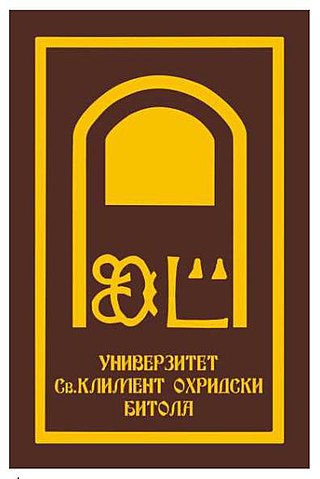
The University St. Kliment Ohridski in Bitola is a public university in North Macedonia. Headquartered in Bitola, it also has faculties in Prilep, Ohrid, Veles, Kichevo and Skopje. It was founded on 25 April 1979, but the name of St. Clement of Ohrid was not given until late 1994. As of 2018–19 school year, a total of 4,139 students are enrolled at the university.

The history of the Jews in North Macedonia stretches back two thousand years, beginning during Roman antiquity, when Jews first arrived in the region. Today, following the Holocaust and emigration, especially to Israel, around 200 Jews remain in North Macedonia, mostly in the capital, Skopje and a few in Štip and Bitola.
Bulgarians are an ethnic minority in North Macedonia. Bulgarians are mostly found in the Strumica area, but over the years, the absolute majority of southeastern North Macedonia have declared themselves Macedonian. The town of Strumica and its surrounding area were part of the Kingdom of Bulgaria between the Balkan wars and the end of World War I, as well as during World War II. The total number of Bulgarians counted in the 2021 Census was 3,504 or roughly 0.2%. Over 100,000 nationals of North Macedonia have received Bulgarian citizenship since 2001 and some 53,000 are still waiting for such, almost all based on declared Bulgarian origin. In the period when North Macedonia was part of Yugoslavia, there was also migration of Bulgarians from the so called Western Outlands in Serbia.

The history of Macedonians has been shaped by population shifts and political developments in the southern Balkans, especially within the region of Macedonia. The ideas of separate Macedonian identity grew in significance after the First World War, both in Vardar and among the left-leaning diaspora in Bulgaria, and were endorsed by the Comintern. During the Second World War, these ideas were supported by the Communist Partisans, but the decisive point in the ethnogenesis of these South Slavic people was the creation of the Socialist Republic of Macedonia after World War II, as a new state in the framework of the Socialist Federal Republic of Yugoslavia.

The groups of people who have settled or controlled the territory of modern-day North Macedonia have influenced the country in many ways, one of the most visible being architecture. These groups of people include the Paionians, Illyrians, Ancient Macedonians, Romans, Byzantines, Bulgarians, Serbs, Ottomans, Yugoslavs, and ethnic Macedonians.

North Macedonia, officially the Republic of North Macedonia, is a landlocked country in Southeast Europe. It shares land borders with Greece to the south, Albania to the west, Bulgaria to the east, Kosovo to the northwest and Serbia to the north. It constitutes approximately the northern third of the larger geographical region of Macedonia. Skopje, the capital and largest city, is home to a quarter of the country's population of 1.83 million. The majority of the residents are ethnic Macedonians, a South Slavic people. Albanians form a significant minority at around 25%, followed by Turks, Roma, Serbs, Bosniaks, Aromanians and a few other minorities.

The national emblem of North Macedonia depicts two curved garlands of sheaves of wheat, tobacco leaves and opium poppy fruits, tied by a ribbon decorated with embroidery of traditional Macedonian folk motifs. In the center of the ovoid frame are depicted a mountain, a lake and a sunrise. The features of the national coat of arms contain a rising sun which symbolizes freedom, the Šar Mountains with its peak named Ljuboten or Mount Korab and the river Vardar, with Lake Ohrid. The emblem also contains opium poppy fruits; this poppy was brought to the area during Ottoman times in the first half of the 19th century. Until 16 November 2009, the emblem also depicted a socialistic five-pointed star in the top. This emblem had been in use since 1946, shortly after the republic became part of Yugoslavia.
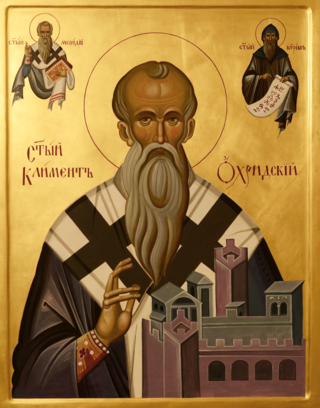
Clement or Kliment of Ohrid was one of the first medieval Bulgarian saints, scholar, writer, and apostle to the Slavs. He was one of the most prominent disciples of Cyril and Methodius and is often associated with the creation of the Glagolitic and Cyrillic scripts, especially their popularisation among Christianised Slavs. He was the founder of the Ohrid Literary School and is regarded as a patron of education and language by some Slavic people. He is considered to be the first bishop of the Bulgarian Orthodox Church, one of the Seven Apostles of Bulgarian Orthodox Church since the 10th century, and one of the premier saints of modern Bulgaria. The mission of Clement was the crucial factor which transformed the Slavs in then Kutmichevitsa into Bulgarians. Clement is also the patron saint of North Macedonia, the city of Ohrid and the Macedonian Orthodox Church.

The National and University Library "St. Kliment Ohridski" in Skopje was one of the first institutions established by the decision of the Anti-Fascist Assembly of the National Liberation of Macedonia (ASNOM) on 23 November 1944.
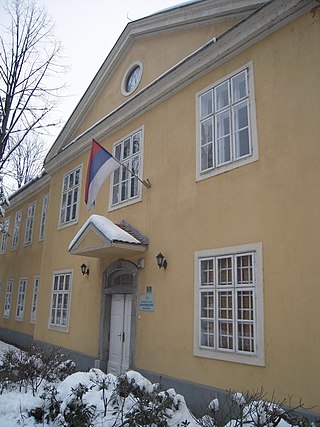
The Archives of Republika Srpska is an administrative organisation within the Ministry of Education and Culture of Republika Srpska, one of two constituent entities of Bosnia and Herzegovina. The Archives' headquarters is in Banja Luka, and it has its regional offices in Doboj, Zvornik, Foča, Sokolac, and Trebinje. Its aim is to collect, store, preserve, organise, research, and provide access to archival materials on the territory of Republika Srpska, where it is designated as a central institution for the protection of cultural heritage. The Archives is also involved in research projects, exhibitions, and in the publishing of books and scholarly papers, mostly in the fields of archival science, history, and law. It is organised into two sectors, which are responsible for the protection of archival materials within and outside the Archives, respectively. The Archives currently holds 794 fonds and 35 collections, which span the period from the 17th century to the modern day.
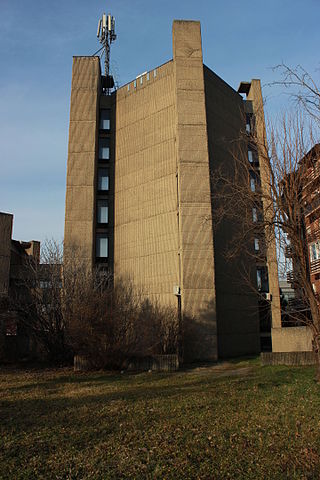
The State Archive of the Republic of Macedonia - Department Skopje, more commonly known as the Historical Archive of Skopje is the primary institution responsible for preservation of archival materials in the City of Skopje and Skopje Statistical Region. Since 1990 the archive formally function as a regional centre of the State Archives of the Republic of North Macedonia.

















